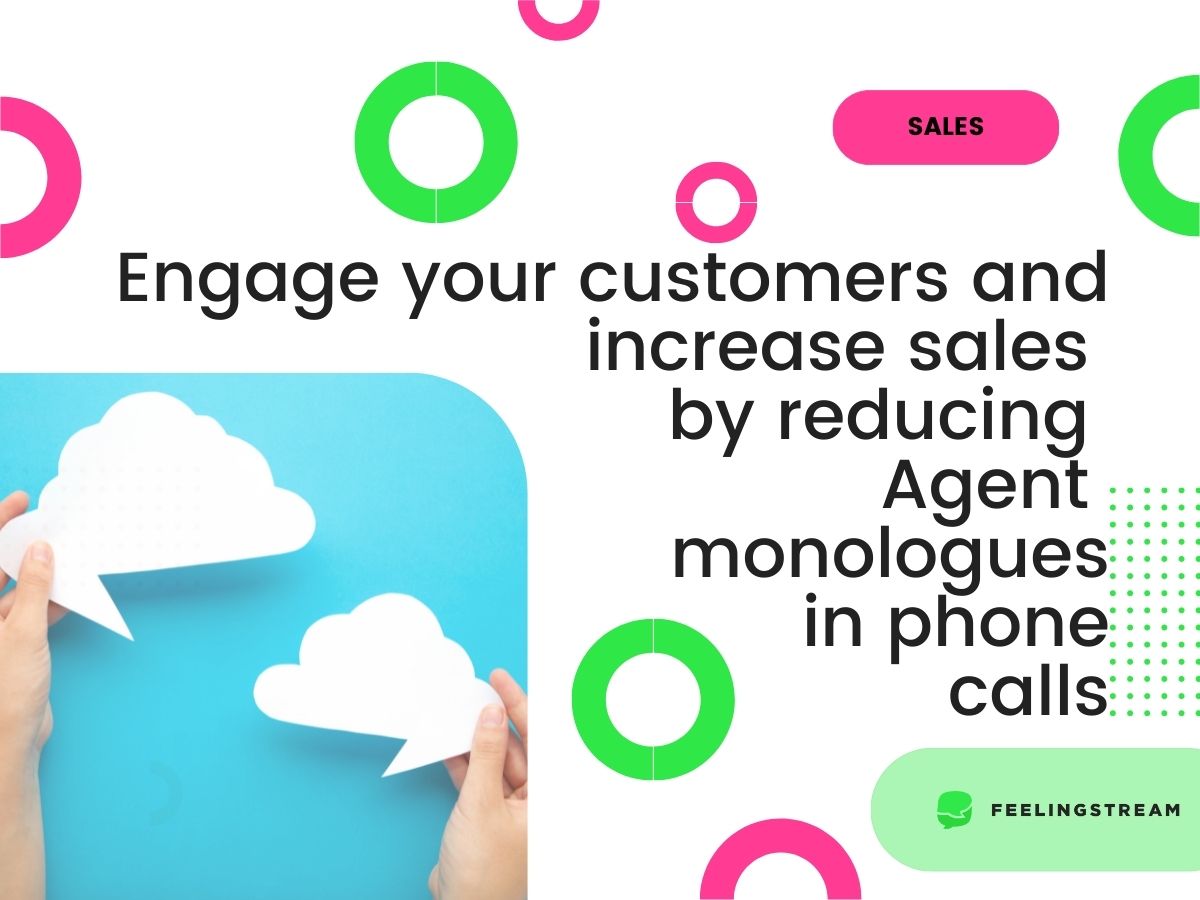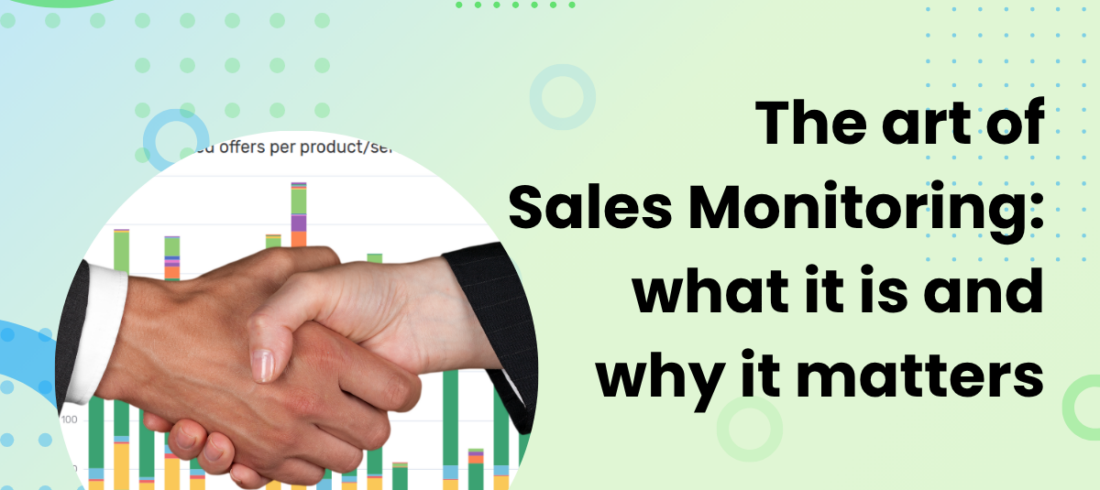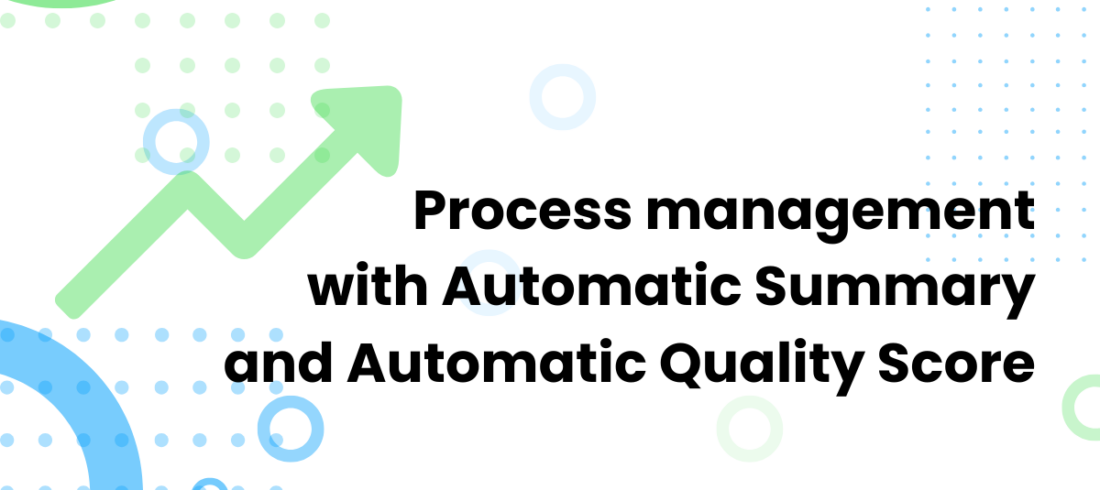Have you ever had a Sales Representative or Agent call you to sell some service or product with a long-winded script? Was it interesting to listen to this monologue? Did you buy what they were selling? Most likely not. Analysis of B2C sales calls has shown that in cases where there are long monologues from the seller and the customer is not involved in a dialogue, the sales are not as successful.
The sales call should be a dialogue, engaging the customer. Sales Managers then face the question – how to measure the balance? How to improve and have their Sales Representatives or Agents sell well and sell more?
Feelingstream has the functionality of monitoring monologues and measuring the balance between the call participants. In this article, we will share our experience with call balance, monologues, and successful sales.
What is the dialogue balance in your sales calls?
Sales Managers may know that long monologues may be killing their sales. Even with planned scripting and sales pitches, the Agents tend to talk more than the customers. There must be a balance in the call to sell to a customer. The seller should be asking questions and the customer responding, working towards a natural offer and understanding.

The talking ratio between the participants is a statistical measurement that managers cannot assess accurately by listening to the calls. Sales Managers can point out improvement points by manual monitoring of the calls. They may notice the monologues, but listening to calls is time-consuming. At the same time, regular sampling of a few calls does not give an overview.
This is where technology can come in to help. Feelingstream’s AI-based automated analysis of calls can measure the talking ratio, filter out the problem calls, and be used to monitor calls day-to-day.
What are monologues and a good dialogue balance in sales calls?
So what is a monologue? We define a monologue as an Agent’s speech of more than 75 consecutive words. While calculating this to time, then it is almost a 40-second speech. That is quite a long time to ask for the customer to focus on purely listening. The Feelingstream Research team conducted an anonymous incoming call analysis. It included nearly 8 000 contacts – the aim was to understand the current balance and talking ratio. The calls were from different industries (including telecom and banking) and the B2C segment.
We found out that the most successful sales calls had a balance of customers and Sales Representatives speaking – a dialogue. In the Harvard Business Review podcast regarding this topic, Amit Bendov from Gong advised that the Agent should be talking under 65% of the time. Furthermore, the best results come when the balance is closer to 50-50. We agree with this.
The results of our experiment with real calls
In our experiment with real calls, we discovered that in 36% of the calls, the Agent used a monologue (75+ words) once or more. We extended the experiment and saw that in 20% of the calls there were monologues with 100+ consecutive words from the Agents. Our experience shows that the calls with those 100+ word monologues do not lead to sales. Analyzing existing customer service calls can generate great sales leads, read more about that from our previous article.
This is the sort of data that the software can provide – general statistics with further access to each problematic call. It is the Sales Manager’s role to decide where to draw the lines. Firstly, when does a monologue become a problem? Furthermore, when is a speech a monologue? Which calls to filter out? These are questions that will be important both for the Sales and Quality teams and Managers. Analyzing the calls and statistics will help create more efficient guidelines, give detailed feedback, and monitor constantly.
Improve your sales by improving your call flow, reducing monologues, and coaching the Agents based on automated call analysis
As the analysis shows that the key to sales success is dialogue, monitoring and finding balance in the talking ratio is the way forward. Feelingstream’s AI-based technology offers the option of setting up filters and searches based on the company’s needs. Managers can then analyze the results further, as all the calls are automatically transcribed into text and easily filtered. Review of contents of a single call is accessible with a click of a button. This is the level of detail that Sales and Quality Managers can go to with the current technology, and that is just one highlighted angle of using it.
In conclusion, analyzing calls with monologues can help Sales Managers set focus to a call script or flow, track the risks, and compare data to sales numbers. Automation can help increase the sales success rate in calls, as scripting, call flow, and coaching can all be changed based on the success stories. Meanwhile, constant monitoring can also help to react as soon as issues arise.
This article is a part of a series of assessing customer service quality (see more about the product and customer service quality). Feelingstream enables automated quality assessment for large corporations for sorting out non-compliant calls very quickly. It saves time as the Quality Managers or Sales Managers get visibility and access to the problem calls.
If you wish to find out what more our technology could do for your company, contact us for a demo.




